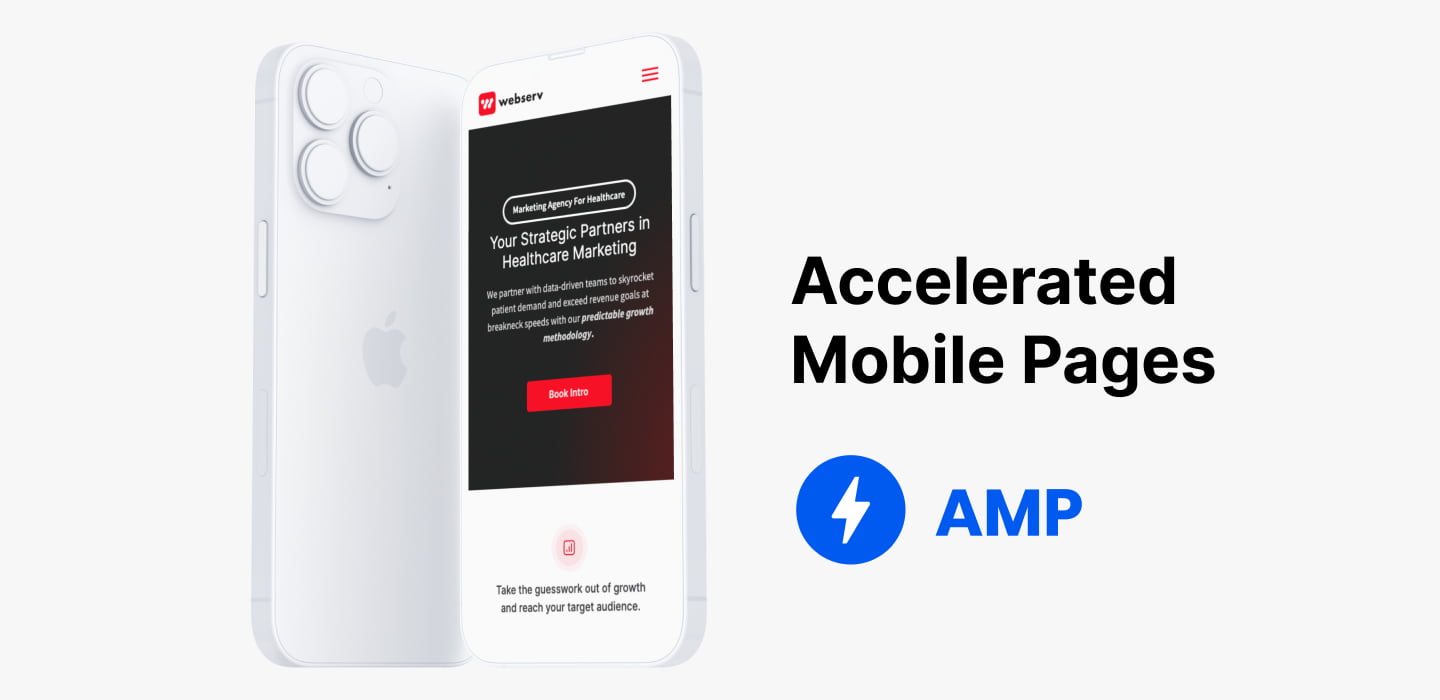Accelerated Mobile Pages (AMP) is an open-source framework that allows web developers to create fast-loading, responsive web pages that prioritize user experience on mobile devices. Developed by Google, AMP is designed to improve the performance and user experience of web pages on mobile devices, particularly for pages that contain a lot of content.

How Does AMP Work?
AMP uses a subset of HTML, called AMP HTML, which includes custom AMP properties and a reduced set of allowed tags. AMP also uses a JavaScript library called AMP JS, which manages the loading of resources, such as images and videos, and ensures that they do not block the loading of the page. Additionally, AMP uses a Content Delivery Network (CDN) to cache and serve AMP pages, which helps to further improve the performance of the pages.
Advantages of AMP
The main advantage of AMP is that it can significantly improve the performance of web pages on mobile devices. AMP pages load faster and are more responsive, which can lead to a better user experience. Additionally, AMP pages may be more likely to appear in the top search results in Google, which can lead to increased visibility and traffic for a website.
Implementing AMP
Implementing AMP on a website is relatively simple and can typically be done by a web developer with basic HTML and CSS knowledge. The first step is to create an AMP version of a page by using AMP HTML and the AMP JS library. The AMP version of the page can then be linked to the original page using the rel=”amphtml” link. Finally, the AMP pages need to be served through the AMP CDN.
Limitations of AMP
While AMP can significantly improve the performance of web pages on mobile devices, it does have some limitations. One limitation is that AMP pages are limited in the types of scripts and styles that they can include, which can make it more difficult to create highly interactive or dynamic pages. Additionally, AMP pages may not have the same level of functionality or flexibility as non-AMP pages.
Conclusion
Accelerated Mobile Pages (AMP) is an open-source framework that allows web developers to create fast-loading, responsive web pages that prioritize user experience on mobile devices. While AMP has some limitations, it can significantly improve the performance of web pages on mobile devices, which can lead to a better user experience and increased visibility and traffic for a website. Implementing AMP on a website is relatively simple and can typically be done by a web developer with basic HTML and CSS knowledge.
Accelerated Mobile Pages FAQ
Why use AMP?
AMP improves the loading speed of mobile web pages, which can lead to a better user experience and higher engagement. It can also improve the visibility of a website in Google search results, as AMP pages are labeled with a lightning bolt icon and are often featured in a carousel at the top of the search results.
What are the limitations of AMP?
AMP has some limitations, such as the restriction on the use of JavaScript and the limitation on the types of ads that can be displayed. It also requires some technical expertise to implement and maintain, and not all features can be replicated with AMP.
Can AMP be used for all types of websites?
AMP is mainly designed for static content-based websites, such as news sites, blogs, and other types of publishing websites. It may not be the best solution for all types of websites, such as e-commerce or dynamic content-based websites.